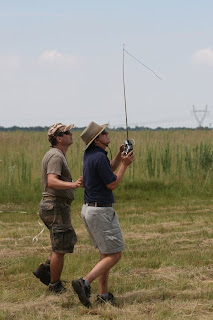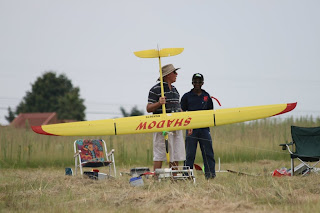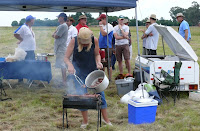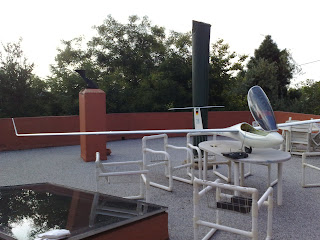
 After Mike’s furiously fast Celstar repair job postings and Michel’s impressive ASW28-18 teaser, it’s time to take a minute to relax, grab a beer and catch up on some HTL happenings.
After Mike’s furiously fast Celstar repair job postings and Michel’s impressive ASW28-18 teaser, it’s time to take a minute to relax, grab a beer and catch up on some HTL happenings.Sorry this report is a little late but my blogging seems to be running a bit behind due to work commitments and family stuff (also got a kid’s 21st birthday coming up) all getting in the way.

 Well, the first leg of the HTL was held on Sunday 18th Jan at ETB. A good idea to move it later into January as it probably resulted in the surprisingly large turnout of 9 teams (three from ETB) with 27 entrants arriving at the field to get their first leg scores in on a perfect highveld summer morning.
Well, the first leg of the HTL was held on Sunday 18th Jan at ETB. A good idea to move it later into January as it probably resulted in the surprisingly large turnout of 9 teams (three from ETB) with 27 entrants arriving at the field to get their first leg scores in on a perfect highveld summer morning.
The host club had the farmer mow a large patch of grass for us and their organisation was outstanding. A novel concept was introduced where almost every round had a different CD, the task being taken on by one of the ETB members that weren’t flying the round – and even juniors had a go at CDing a round or two. A little confusing at first but they pulled it off well and there were no problems.

 Conditions were overcast and wind was non existent to light while setting up. It strengthened for the first two rounds and then swung 180 degrees for a while before settling to light and variable in direction for the rest of the day. Cumulus clouds developed early in the
Conditions were overcast and wind was non existent to light while setting up. It strengthened for the first two rounds and then swung 180 degrees for a while before settling to light and variable in direction for the rest of the day. Cumulus clouds developed early in the  day and gave us really challenging conditions – thermals tended to be fairly well defined but light and small. We just managed to finish and get packed up before the first rain drops started coming down on us.
day and gave us really challenging conditions – thermals tended to be fairly well defined but light and small. We just managed to finish and get packed up before the first rain drops started coming down on us.Notable for this first leg of the HTL was the large proportion of 2 meter entries and Craig’s request to have a single flight of 10 minutes with a 2 meter model scored for open and normalised against the 6 minute fliers. This allows a 2 meter contestant to fly open and score in both open and 2 meter classes with one flight. Interesting, and may even work.


Open Results were Chris Adrian first, Craig Baker second and Trevor Austen third. BERG team results were Piet in 9th place, me in 10th place, Peter Joffe (Tsotsi not flying well at all) coming in 23rd. Some of our members such as Gordon and Jochen were placed in other teams. But then since the closing of the MMS field and their members flying at the BERG field and Evan moving over to the East Rand, I’ve kind of lost track of who flies for which club. But it really doesn’t matter – when we all get together it always results in a great flying day. In fact, how about the organisers of one of the HTL events throw random entrants together into fun teams - could be interesting?
In the 2 meter class I managed a third with Dion Liebenberg second and Alan Smith first. For the full results and Lionel’s round by round report, pop along to the MGA blog (link on the right hand side panel).









































